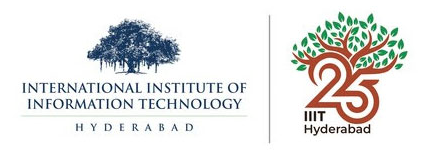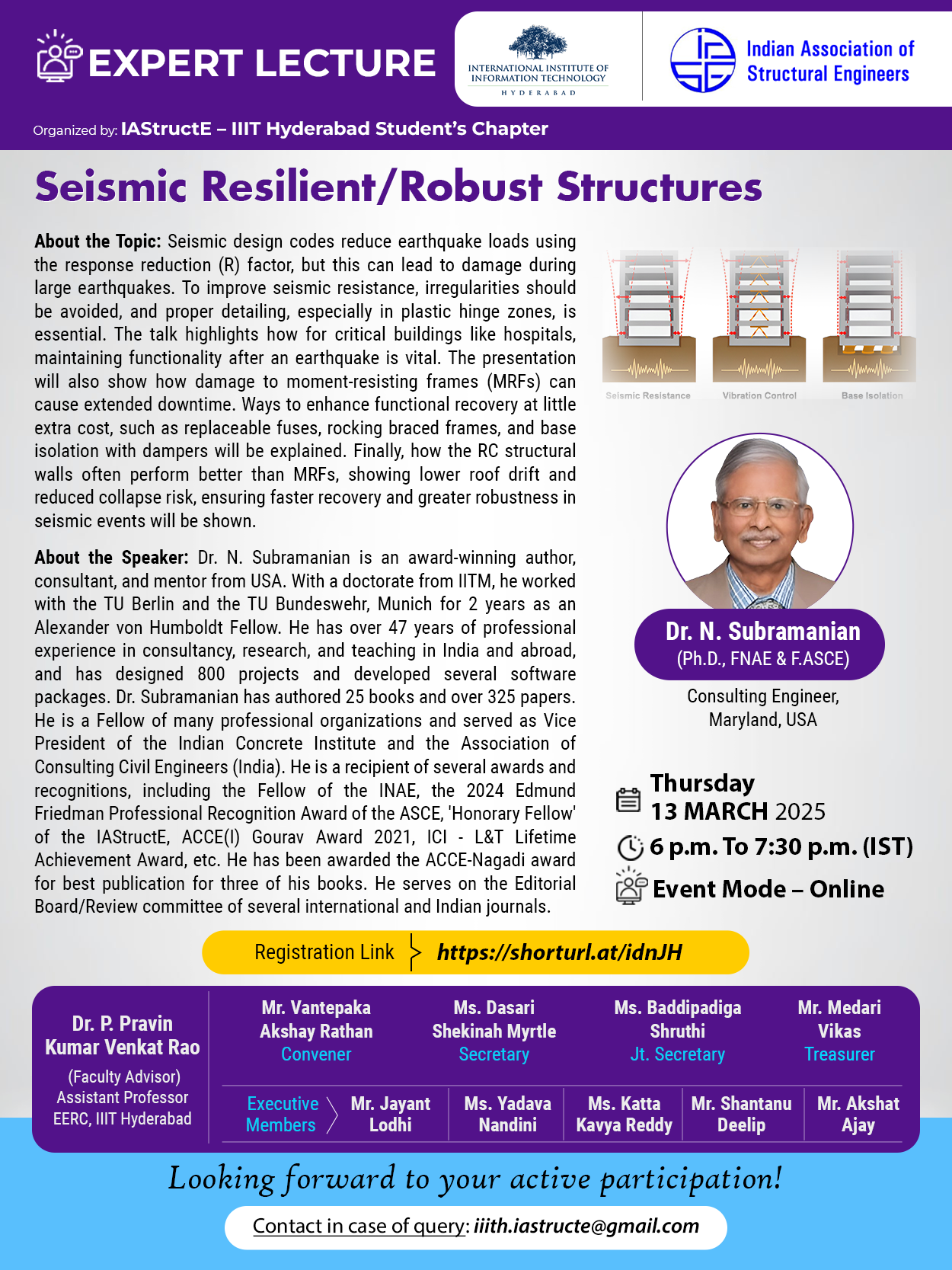

The IAStructE – IIIT Hyderabad Student Chapter organized an expert lecture on 13th March 2025 on the topic “Seismic Resilient and Robust Structures” delivered by Dr. Subramanian Narayanan, a renowned consultant engineer from Maryland, USA. The session provided valuable insights into earthquake-resistant design, emphasizing robustness, resilience, and innovative engineering solutions to mitigate seismic damage. Dr. Subramanian began by discussing the unpredictable nature of earthquakes and their multidirectional forces, which complicate structural design. He stressed that while earthquakes themselves do not cause destruction, failures arise due to improper design and inadequate detailing. Key factors influencing seismic damage, such as ground motion intensity, soil conditions, and structural irregularities, were examined through case studies of past earthquakes. He highlighted the importance of modern seismic codes, particularly IS 1893 and IS 13920, in ensuring structural safety. A critical distinction was made between robustness and resilience in seismic engineering, where he explained that ‘Robustness’ refers to a structure’s ability to withstand seismic forces without significant damage, while ‘Resilience’ pertains to how quickly it can recover post-earthquake.
The lecture then explored advanced seismic design strategies that enhance both robustness and resilience. Base isolation systems were introduced to reduce forces transmitted to a structure by allowing controlled movement. Notable examples included the San Francisco International Airport, the New Delhi Hospital, and the William Clayton Building. Energy dissipation devices, such as viscous dampers, tuned mass dampers, and friction dampers, were also discussed, with Taipei 101 highlighted as a successful application of tuned mass damping. Additionally, replaceable structural components, such as fuse-like steel elements and coupling beams in shear walls, were explored as cost-effective methods for rapid post-earthquake recovery. These strategies align with performance-based seismic design, which prioritizes minimizing repair costs while maintaining functionality. Dr. Subramanian emphasized the importance of structural detailing, particularly the strong-column weak-beam concept, which prevents progressive collapse by ensuring plastic hinges form in beams rather than columns. He also highlighted the role of lateral ties in beam-column joints and confined reinforcement in plastic hinge zones, which enhance energy dissipation. The discussion extended to non-structural elements, such as façades and mechanical systems, which often suffer significant damage and lead to high repair costs. Finally, the session explored seismic resilience in India, emphasizing its high vulnerability and the limited adoption of advanced technologies. Dr. Subramanian discussed India’s first base-isolated hospital in Bhuj and ISRO’s seismic-resistant designs. He also stressed the importance of site-specific foundation design in earthquake-prone regions, citing the 1985 Mexico City Earthquake as an example of how poor geotechnical conditions can amplify ground motion and cause collapses.
The lecture concluded with an engaging Q&A session, where Dr. Subramanian addressed topics including seismic detailing, damping systems, and India’s evolving seismic code provisions. He also discussed the challenges of implementing advanced seismic techniques and their cost-effectiveness. Overall, the session was an enriching learning experience, making complex seismic resilience and robustness concepts accessible to all participants. Dr. Subramanian’s presentation, coupled with real-world case studies and practical insights, kept the audience actively engaged. The event successfully deepened the understanding of seismic design principles, reinforcing the need for innovative solutions to enhance structural robustness and safety.

Visitors Count